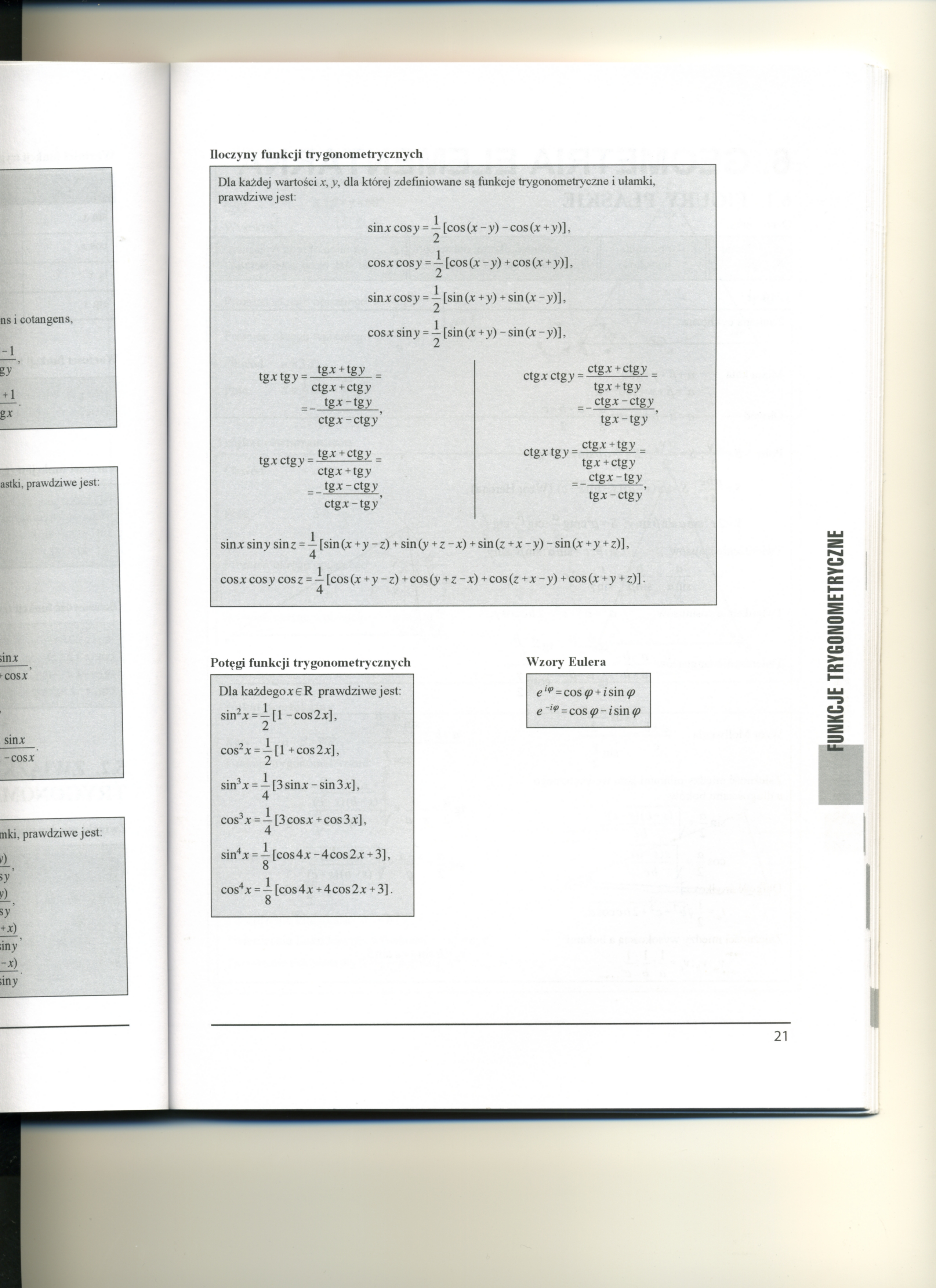img221

Iloczyny funkcji trygonometrycznych
Dla każdej wartości x, y, dla której zdefiniowane są funkcje trygonometryczne i ułamki, prawdziwe jest:
sin* cosy = ^ [cos (*-y) - cos (* + y)], cos* cosy = -i [cos (* -y) + cos (* + y)], sin* cosy =-i [sin (* +y) + sin(*-y)], cos* siny = — [sin (* + y) - sin (* - y)],
tg* + tgy
tg* ctgy
|
ctg* + |
ctgy |
|
- ‘g* |
-tgy |
|
ctg* |
-ctgy’ |
|
+ * II |
ctgy |
|
ctg* |
+ tgy |
|
tg-* |
-ctgy |
ctg* - tgy
ctg* ctgy = =
tg* + tgy _ ctg*-ctgy
tg*-tgy ’
ctg* tgy
. ctg* + tgy _ tg* + ctgy . ctg*-tgy tg*-ctgy’
sin* siny sin z = — [sin(* +y - z) + sin(y + z -*) + sin (z +* -y) - sin(* +y + z)].
4
cos* cosy cosz = — [cos(* +y -z) +cos(y + z -*) + cos(z +* -y) +cos(* +y +z)]. 4
Potęgi funkcji trygonometrycznych
Dla każdego* eR prawdziwe jest: sin2* = ^ [1 - cos 2*],
cos2* = ^[l +cos2*].
sin3* = — [3 sin* - sin 3*],
cos3* = — [3 cos* + cos 3 *],
4
sin4* = -^[cos4*-4cos2* + 3],
cos4* = — [cos4* + 4cos2* + 3]. 8
Wzory Eulera
e‘q, = cos<p+ińn<p e ^cosęz-isinę?
21
Wyszukiwarka
Podobne podstrony:
Cena rozliczeniowa Wartość, według której rozliczane są transakcje giełdowe; dla obligacji cena
str 4 (17) Jako przykład może posłużyć bryła na rysunku 3.18 (na wklejce), dla której rzuty A i B są
Obliczanie wartości funkcji trygonometrycznych dla kąta ostrego Zadanie Oblicz wartości funkcji
Tabela wartosci funkcji Tabelka wartości funkcji trygonometrycznych dla niektórych wartości
statystyka skrypt�53 Do równania regresji dołącza się funkcję fk(x) dla której wartość F,* jest najw
więcej podobnych podstron